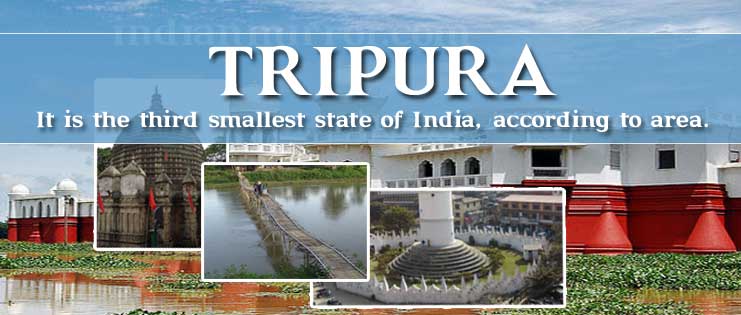[vc_row][vc_column][vc_posts_slider type=”flexslider_slide” count=”” interval=”3″ thumb_size=”full” posttypes=”post” categories=”Tripura”][/vc_column][/vc_row][vc_row][vc_column][vc_column_text]
Tranquil Tripura is a picturesque state, surrounded by hills and dales, sprawling green valleys and hilly brooks. Tucked away in the extreme corner of the northeast, amidst the river valleys of Myanmar and Bangladesh, it is endowed with natural beauty, rich cultural and historical heritage. The Rajmala chronicles of king Tripura and other Muslim historians reflect the glorious past of the land. The state never came under British supervision and the Maharajah’s successors ruled right until accession to the Indian Union in 1949.
The state is well-known for its palaces, wildlife sanctuaries, museums and temples; including Buddhist ones. It is endowed with four wildlife sanctuaries that shelter numerous species and boast of a stunning chiaroscuro of nature. While Sepahijala sanctuary is a delight for bird watchers, bisons and golden langurs (moneys) are the main attractions of Tripura.

The capital, Agartala, founded by Maharaja Krishna Kishore Manikya in 1838 AD, is studded with beautiful palaces, lakes, well-laid out gardens and official, red-bricked buildings. Puratan Agartala or ‘old Agartala’ is often referred to as the second capital; well-known for its temple dedicated to 14 deities whose heads alone are present for worship.
State Capital: Agartala
Places of interest: Palaces (Ujjayanta, Neermahal, Kunjaban), wildlife sanctuaries (Gumti, Trishna, Rowa, Sepahijala), Hindu temples (Bhuvaneshwari, Jagannath, Tripura Sundari, Kamalasagar Kali, Chaturdasha Devata); Buddhist temples (Manu Bakul, Venuban Vihar, Pecharthal); lakes (Kamalasagar, Dumboor), Jampui Hill, Government Museum, Purbasha.
Official website: http://tripuratourism.gov.in/
[/vc_column_text][vc_basic_grid post_type=”post” max_items=”10″ grid_id=”vc_gid:1463485468084-363739c6-72e0-5″ taxonomies=”34″][/vc_column][/vc_row]
